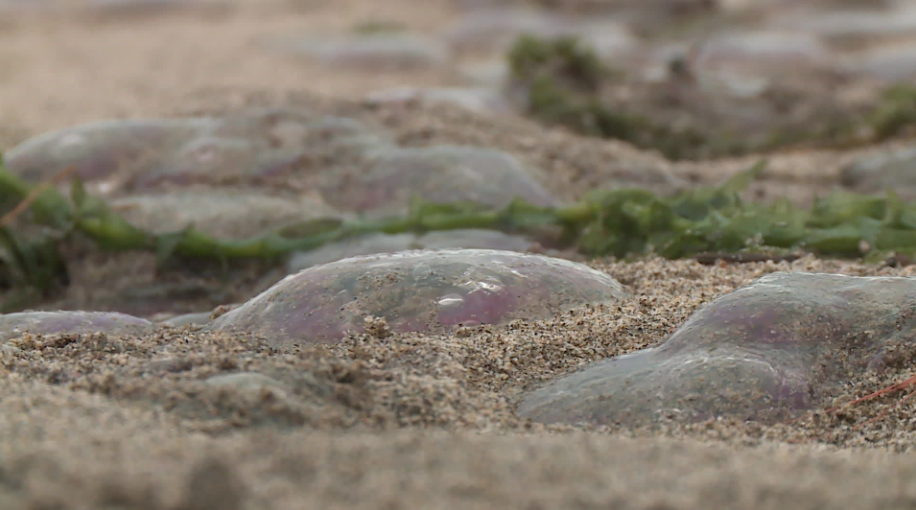Thousands of jellyfish have been discovered on the beaches of the Pyrénées-Orientales, as well as in neighboring departments such as Aude and Hérault. Attracted by the abundant plankton during this period, these jellyfish are highly stinging. It is advised to keep a safe distance from them.
It was walkers along the beach at Canet-en-Roussillon who were surprised by such a large number of jellyfish. Found dead on the shore but also alive in the waters near Perpignan, jellyfish have invaded the beaches of the Pyrénées-Orientales in recent days, including Canet, Barcarès, and Banyuls-sur-Mer. The same goes for the area around Roses in southern Catalonia, as well as north towards Port-la-Nouvelle and up to Sète.
The jellyfish in question is Pelagia noctiluca, commonly known as the mauve stinger. It has a pink/purple color and is a species native to our region. Their presence is linked to the abundance of plankton, which they feed on at this time. This phenomenon is also attributed to the winds that have brought them closer to the shore.
Pascal Romans, curator of the Biodiversity Museum in Banyuls-sur-Mer and head of the aquarology service at the Banyuls Oceanological Observatory, observed this species of jellyfish himself about ten days ago during a night dive off the coast of Banyuls.
Wind and Food
« If there is a lot of plankton, it is also due to the wind, particularly the tramontane, which at certain times pushes the surface water away from the shore and leads to upwellings of deeper, nutrient-rich waters near the coast. This process promotes the development of phytoplankton and then zooplankton, which jellyfish feast upon, » explains Pascal Romans.
« The precipitation observed in recent weeks has also contributed to bringing nutrients into the sea via rivers, across the Gulf of Lion. So basically, there is plenty to eat, and the wind is bringing the jellyfish to areas with food—it’s a feast for the mauve stingers! » This « feast » features a substantial number of guests, which is « not unusual for this time of year, » according to the scientist. « They are often present in November and in the spring. »
Beware of Stings
Its Latin name, Pelagia noctiluca, means « who shines at night at sea, » a term that refers to this jellyfish’s ability to produce light upon contact (waves, boat hulls, etc.). However, this is not the only characteristic of this jellyfish.
Highly venomous, the mauve stinger is common in the Mediterranean, where its proliferation occasionally leads to swimming bans on many French beaches, as its sting is extremely painful. Also known as the « sea nettle, » it is equipped with cnidocytes (derived from the Greek word knidé, meaning nettle), which are stinging cells dispersed along its eight tentacles, bell, and four oral arms. Upon contact, these capsules release venom. Therefore, caution is advised for those wanting to enjoy the mild autumn weather with a dip in the sea.
The water is still warm enough for swimming, but the probability of encountering these jellyfish is not negligible, unlike what typically happens in November or in April/May when these jellyfish are usually present while bathers stay on land. As a result, they are much less noticed.
— Pascal Romans, Curator of the Biodiversarium of Banyuls-sur-Mer
In case of contact with the mauve stinger, rinse the affected area thoroughly with seawater for about 30 minutes to eliminate the stinging cells. Avoid rubbing the area, as this could spread the venom further.
Source: france3



